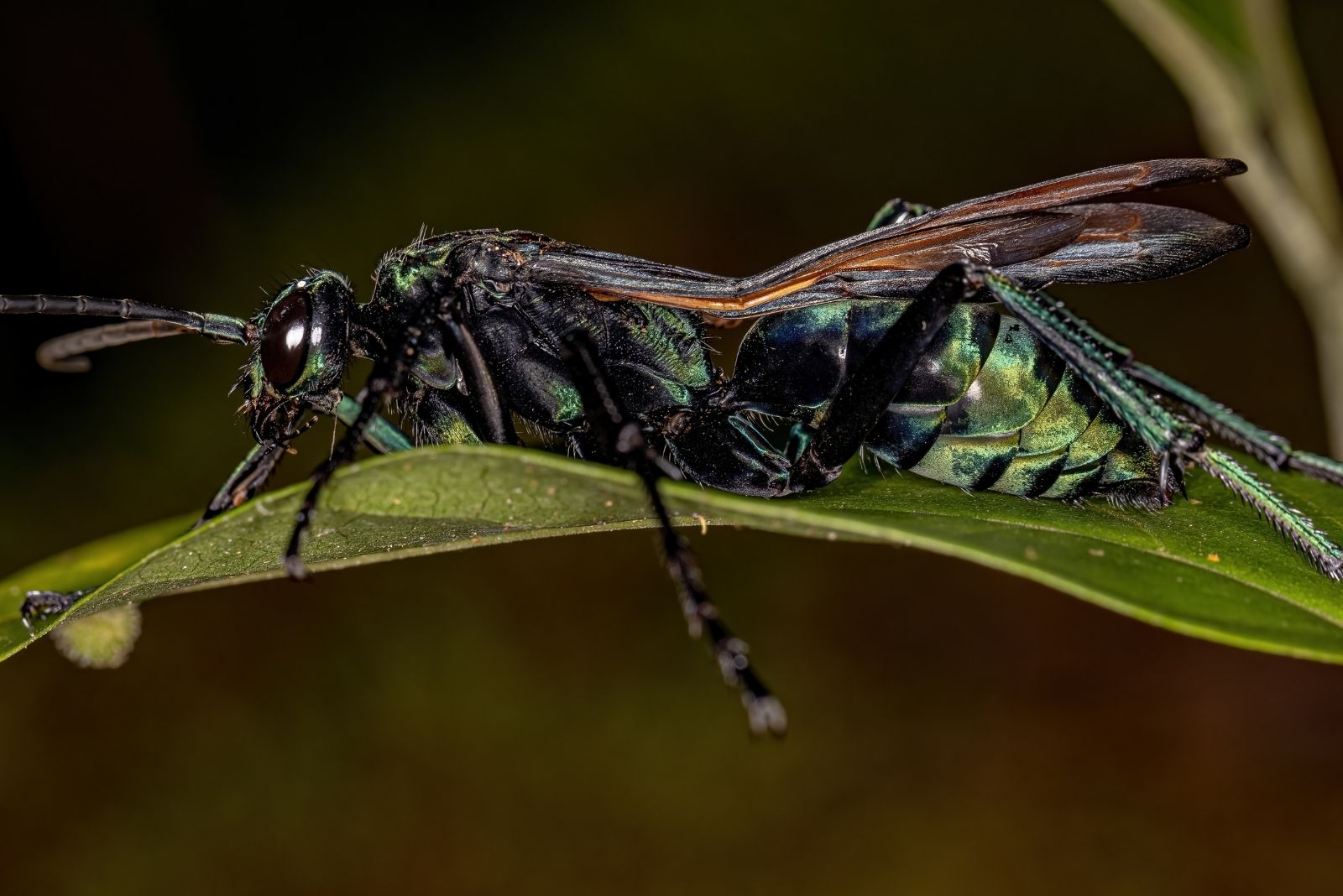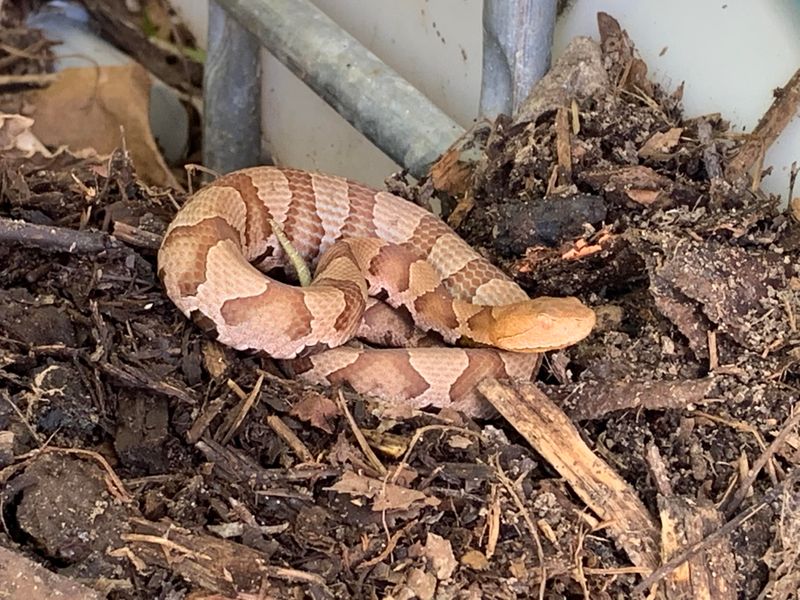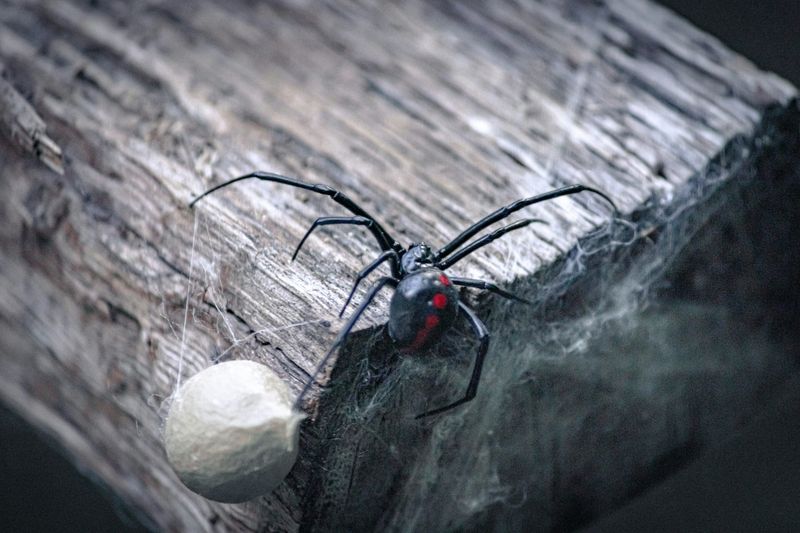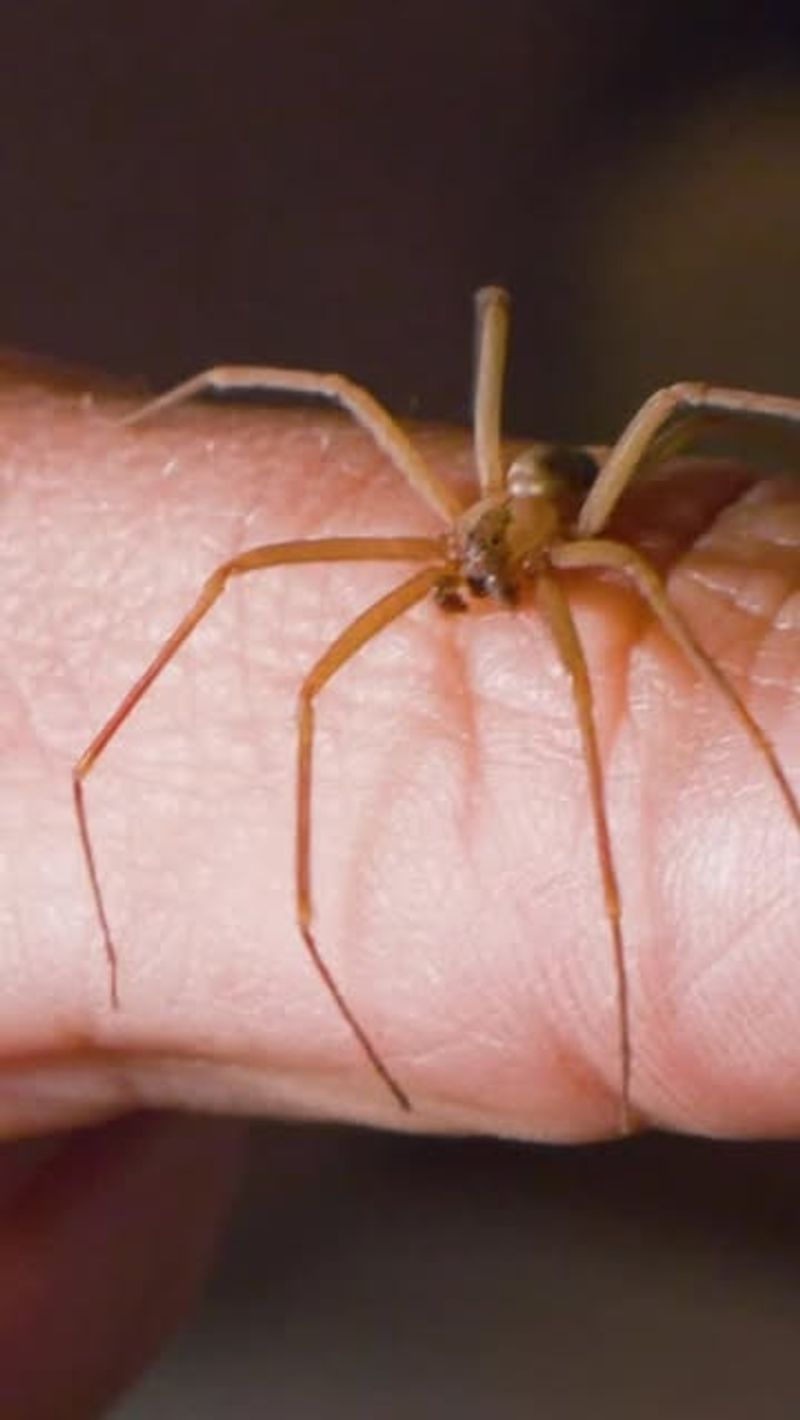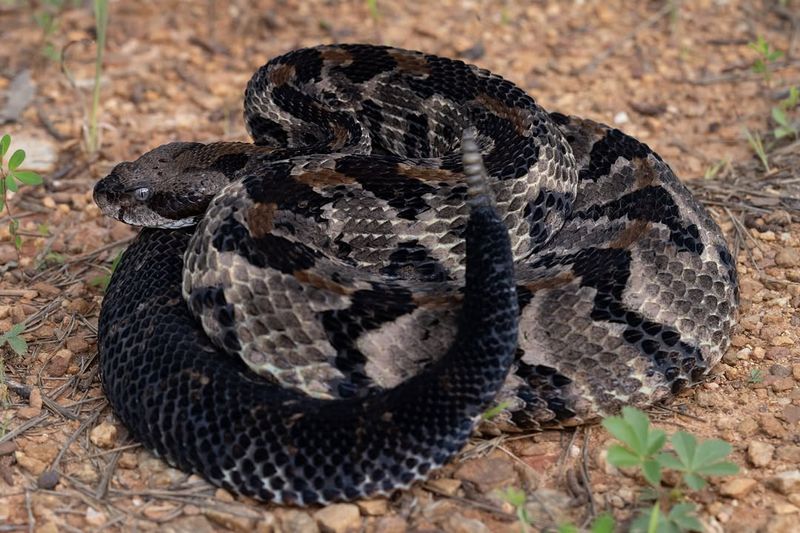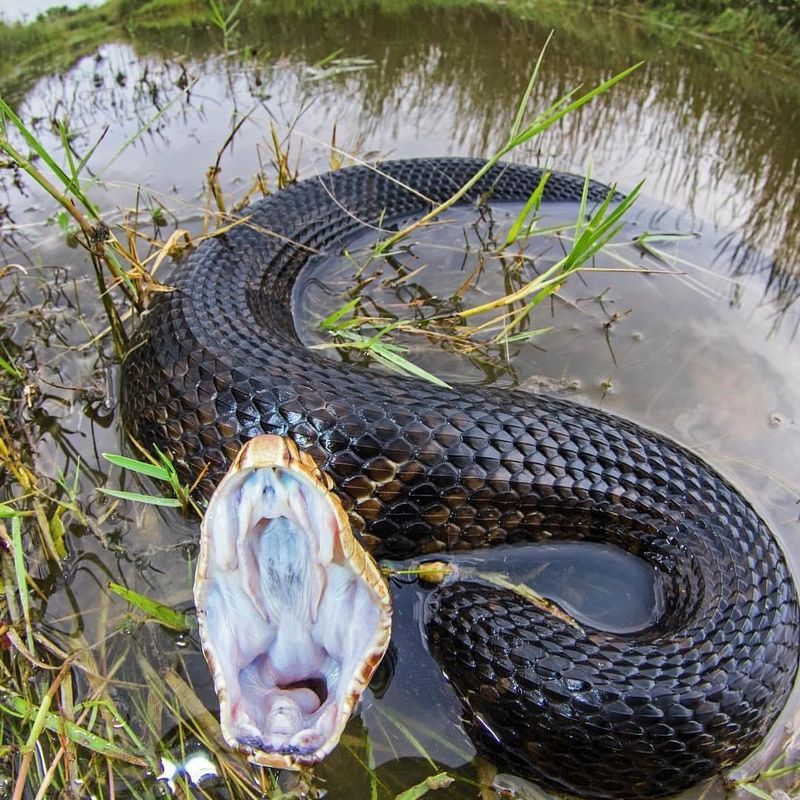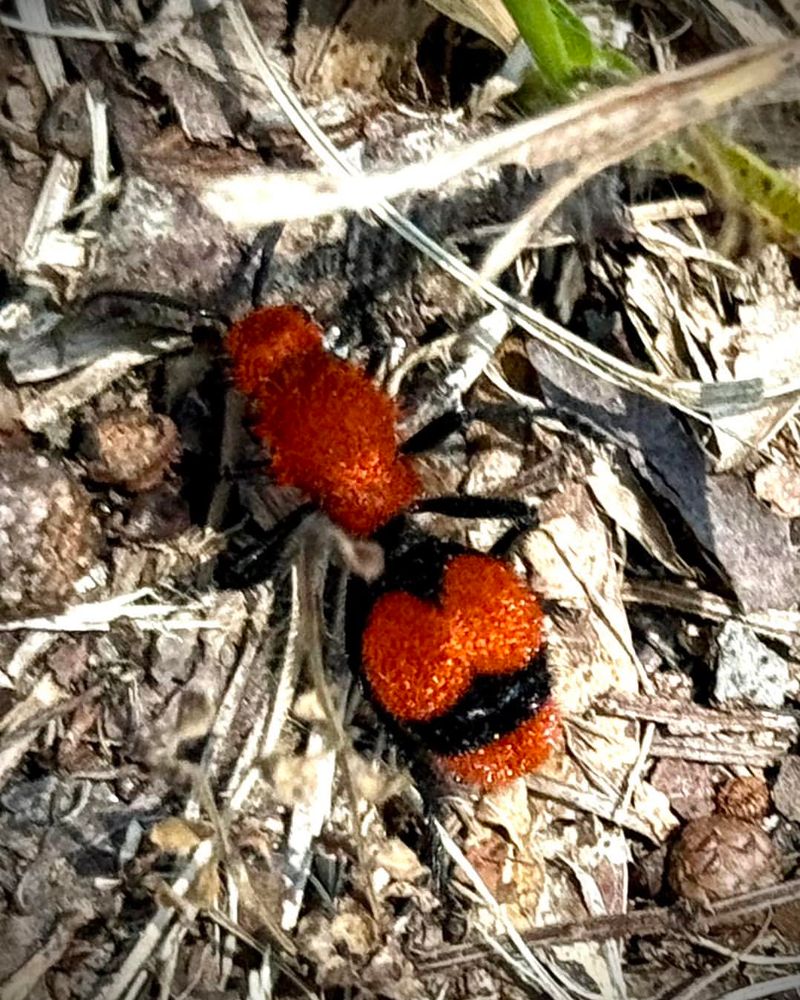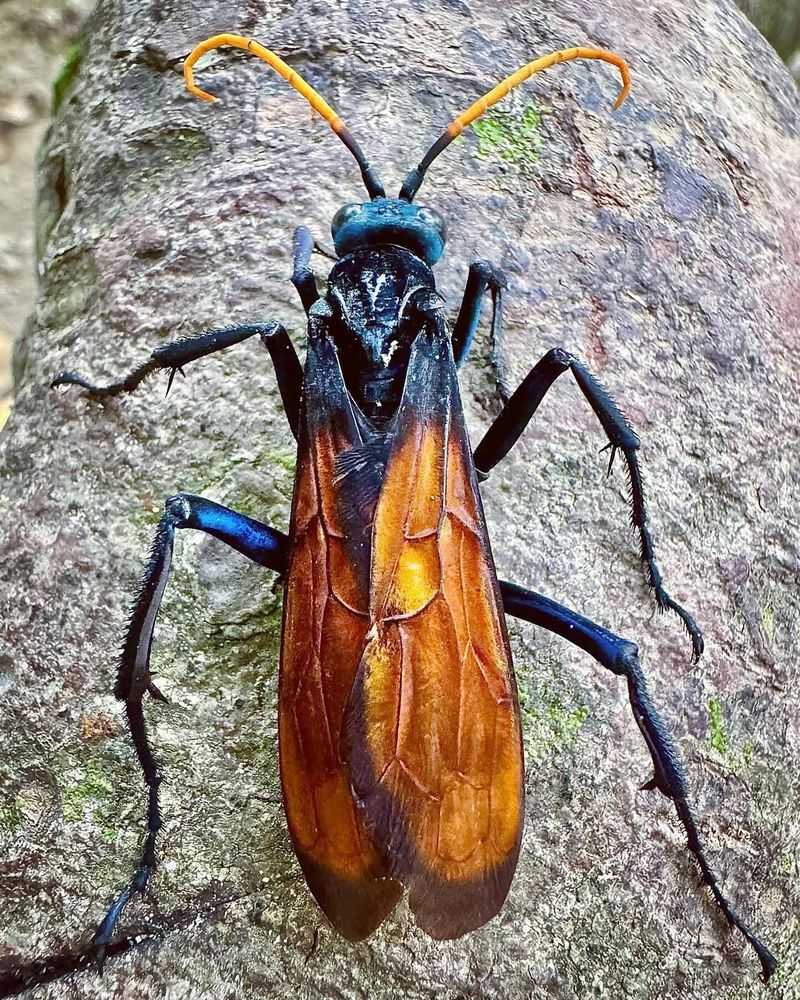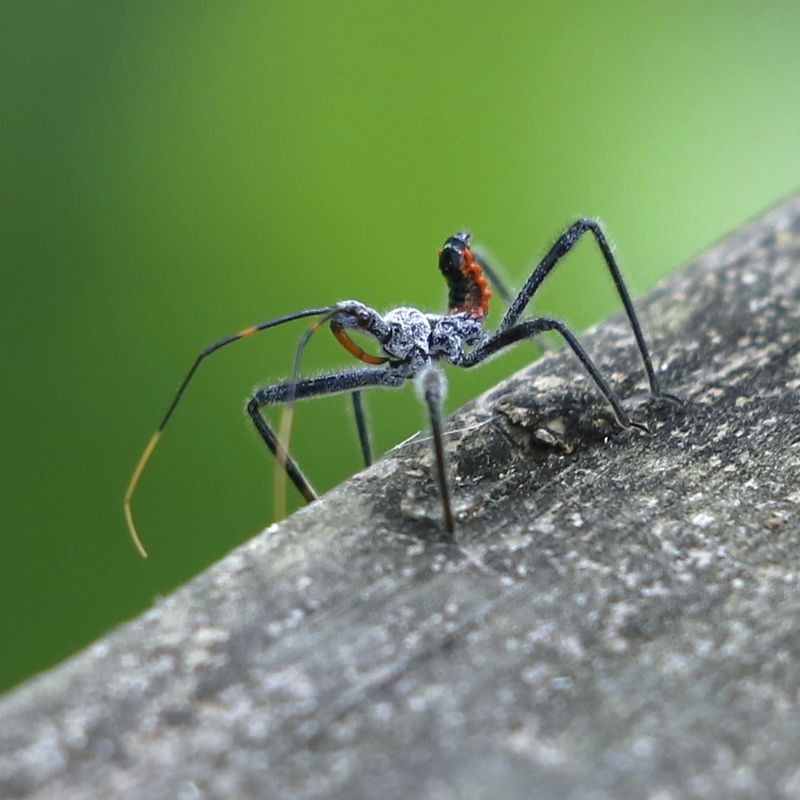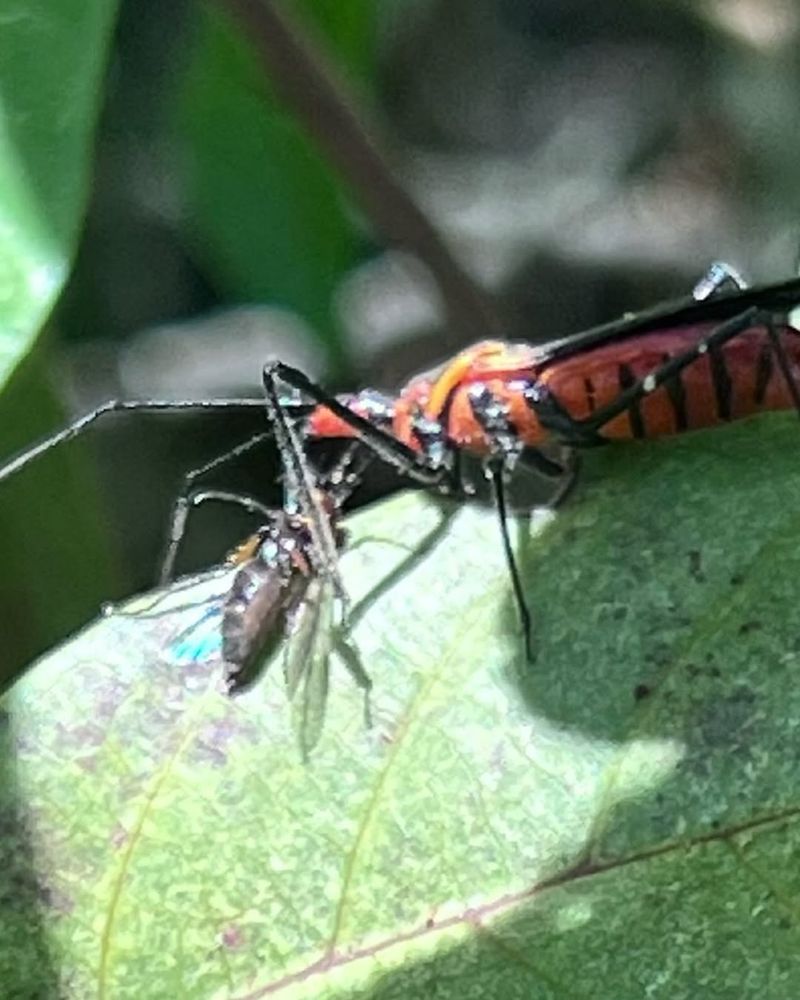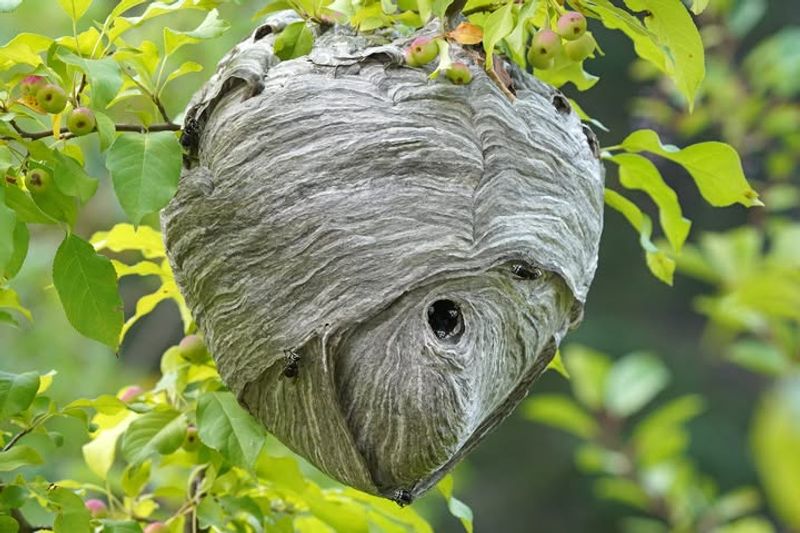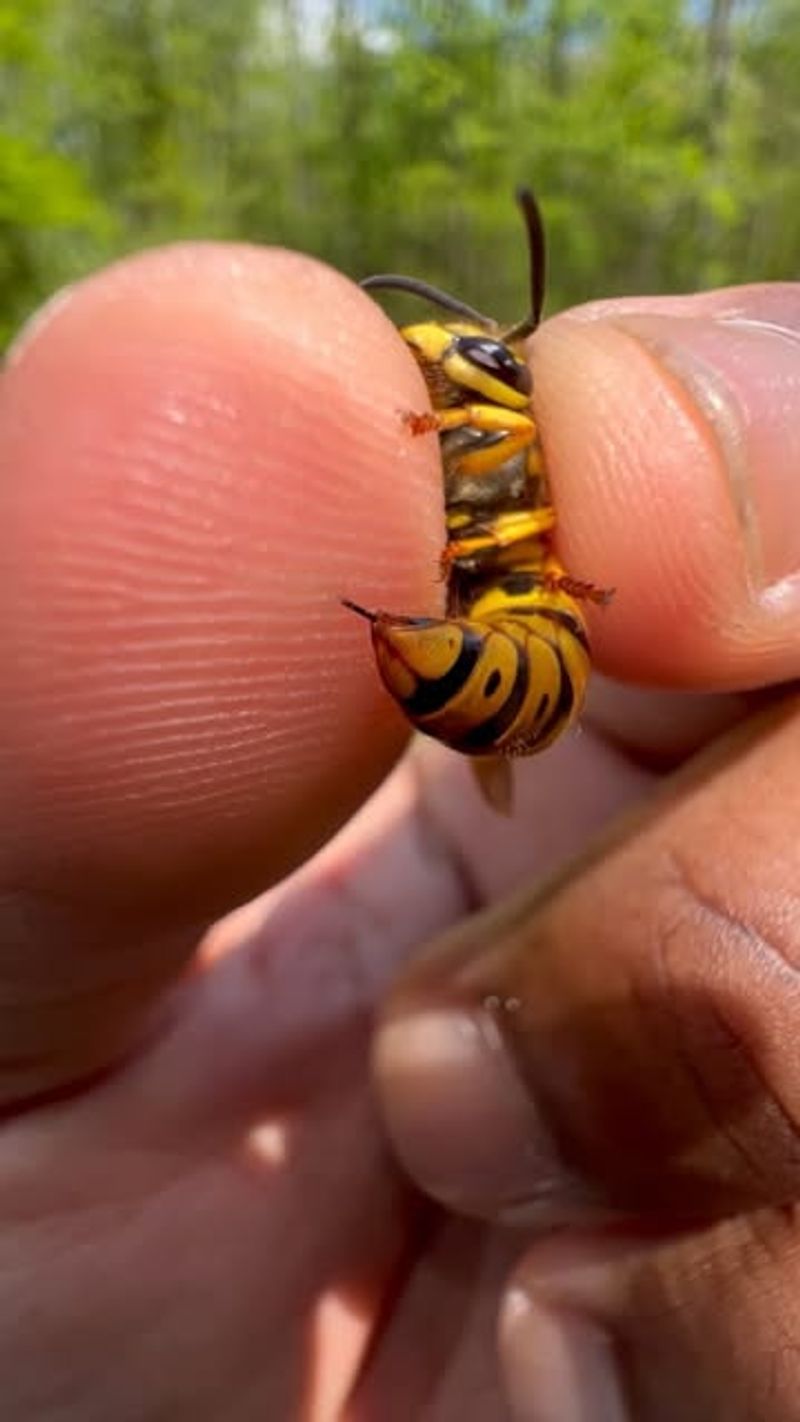Working in a Missouri garden means more than just dealing with weeds and watering schedules. Our state’s warm summers and humid climate create perfect conditions for several venomous creatures that like to hide among plants, mulch, and garden tools.
Knowing what to watch for can help you stay safe while enjoying your outdoor space.
1. Copperhead Snakes Around Compost Piles
Compost bins and leaf piles attract mice and other small prey, which makes them favorite hunting spots. The hourglass pattern on their backs blends perfectly with decomposing leaves, making them nearly invisible until you’re too close.
I once reached into my compost to turn it over and spotted one coiled against the wooden frame. Now I always use a long tool to stir things up first before putting my hands anywhere near the pile.
Wearing thick gloves and boots offers good protection when working around these areas.
2. Black Widow Spiders In Shed Corners
Garden sheds provide the dark, undisturbed spaces these spiders prefer for building their messy, irregular webs. They often settle behind stored pots, under shelving, or in corners where you might grab tools without looking.
The shiny black body with that red hourglass underneath is unmistakable once you know what to look for. Females are the ones to watch for since males are much smaller and rarely bite.
Before reaching into storage areas, I tap the spot with a stick and shine a flashlight to check for webs.
3. Brown Recluse Spiders Under Flowerpots
Flowerpots left undisturbed for weeks become ideal hiding spots, especially when they’re sitting directly on soil or mulch. The violin-shaped mark on their back is their signature feature, though it can be hard to spot on younger spiders.
Unlike more aggressive spiders, these would rather run away than bite, but accidents happen when you’re moving pots around. For me, keeping gloves on while rearranging containers has become second nature after a close call one spring morning.
Shake out gloves and check under pots before lifting them.
4. Timber Rattlesnakes Near Rock Gardens
Rock gardens and stone borders hold heat well, which attracts these snakes on cooler mornings and evenings. Their rattles provide a warning sound, but younger ones sometimes have rattles too small to hear clearly.
The dark chevron bands across their backs help them blend into rocky areas and fallen branches. When working near stone features, I’ve learned to watch where I step and listen carefully for that distinctive buzzing sound before kneeling down to weed.
Keep pathways clear and avoid reaching blindly between rocks.
5. Cottonmouth Snakes Along Garden Ponds
Water features and pond edges draw these semi-aquatic snakes, especially during hot summer months when they’re hunting frogs and fish. Their thick bodies and dark coloring make them look almost black when wet.
When threatened, they open their mouths wide to show the white interior that gives them their name. I used to mistake them for harmless water snakes until I learned to recognize their blocky heads and the way they hold their ground instead of fleeing.
Maintain clear sightlines around water features and trim back overhanging plants.
6. Velvet Ants In Bare Garden Soil
Despite their name and fuzzy appearance, these are actually wingless wasps with one of the most painful stings in the insect world. They scurry across open soil and mulched areas looking for ground-dwelling bee nests to parasitize.
The females sport bright orange and black fuzzy coats that make them look almost cute until you get too close. Their nickname “cow killer” comes from the intensity of their sting, though it won’t actually kill anything that large.
Watch where you kneel in bare soil and teach kids never to touch fuzzy insects.
7. Tarantula Hawks Near Flowering Plants
These massive wasps visit gardens during summer months, attracted to nectar from flowering plants like milkweed and lantana. Their metallic blue-black bodies and orange wings make them impossible to miss when they’re buzzing around blooms.
They hunt tarantulas to lay eggs on, but their sting is considered one of the most painful insect stings you can experience. Fortunately, they’re not aggressive toward people unless you try to grab them or step on them barefoot.
Give them space when they’re feeding and avoid walking barefoot near flowering beds.
8. Wheel Bugs On Tomato Plants
Tomato plants and other vegetable crops attract these beneficial predators that feed on harmful caterpillars and beetles. The cogwheel-shaped crest on their backs makes them easy to identify, and they’re actually helpful for pest control.
Their curved beak can deliver a painful bite if you handle them roughly, though they’re not naturally aggressive. I appreciate having them around to manage hornworms, but I’ve learned to admire them from a distance rather than trying to relocate them by hand.
Let them do their pest-control work and avoid direct contact with hands.
9. Assassin Bugs In Dense Foliage
Dense plantings of shrubs and perennials provide perfect hunting grounds for these predatory insects that ambush other bugs. Their long legs and narrow bodies help them move silently through leaves while stalking prey.
Like wheel bugs, they can bite defensively if squeezed or trapped against skin, causing sharp pain and sometimes swelling. When I’m pruning thick growth or harvesting from bushy herbs, I move slowly and watch for movement before reaching deep into the foliage.
Wear long sleeves when working in overgrown areas and shake plants gently before handling.
10. Bald-Faced Hornets Near Shrubs
Shrubs and small trees often host the large paper nests these aggressive hornets build during summer. Their black bodies with white facial markings make them distinctive, and they’re much more defensive than typical wasps.
A single nest can house hundreds of workers that will swarm to protect their home if they feel threatened by vibrations or proximity. I once accidentally brushed against a shrub hiding a nest while trimming and learned quickly how fast they respond.
Inspect shrubs before pruning and call professionals to remove nests near work areas.
11. Yellow Jackets In Ground Cavities
Old rodent burrows and gaps under garden edging become nest sites for colonies that can grow to thousands of workers by late summer. Their yellow and black stripes look similar to honeybees, but their aggressive behavior is completely different.
Mowing or walking too close to a ground nest triggers immediate defensive attacks from multiple workers. The vibrations from lawnmowers or tillers are especially likely to set them off, and their stings hurt considerably more than regular bees.
Mark any ground nests you discover and avoid the area until professionals can remove them.

